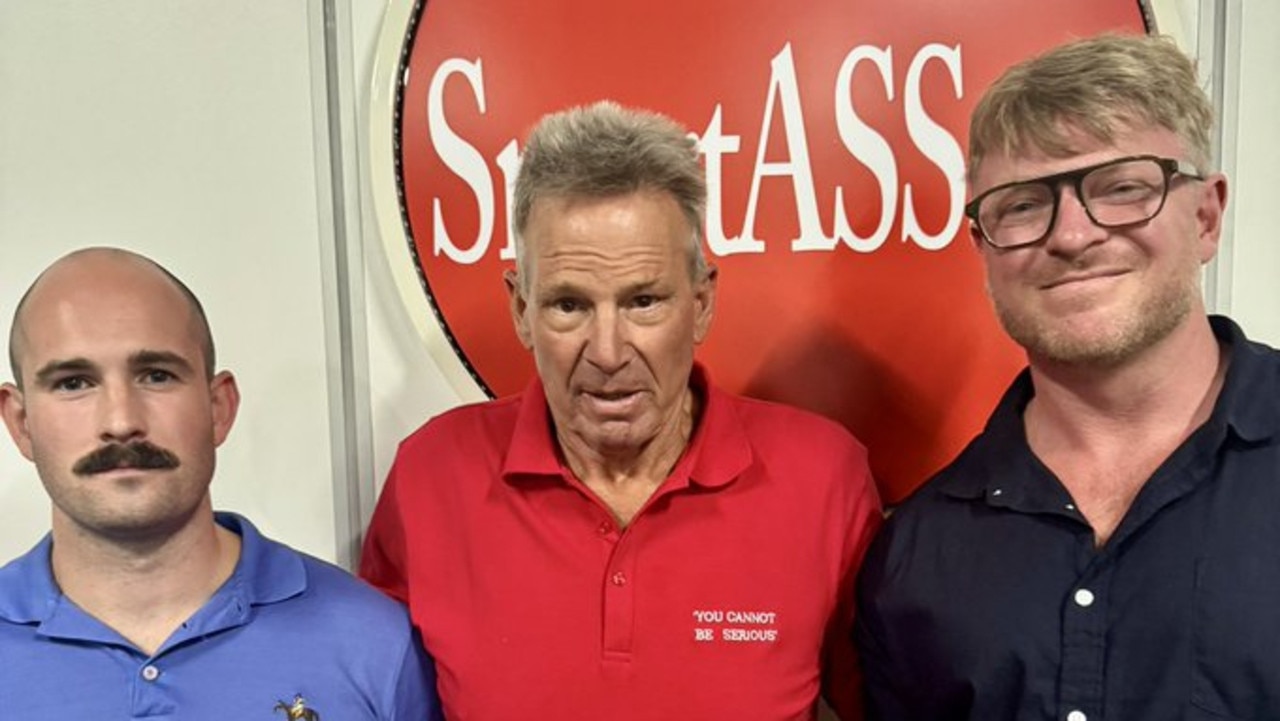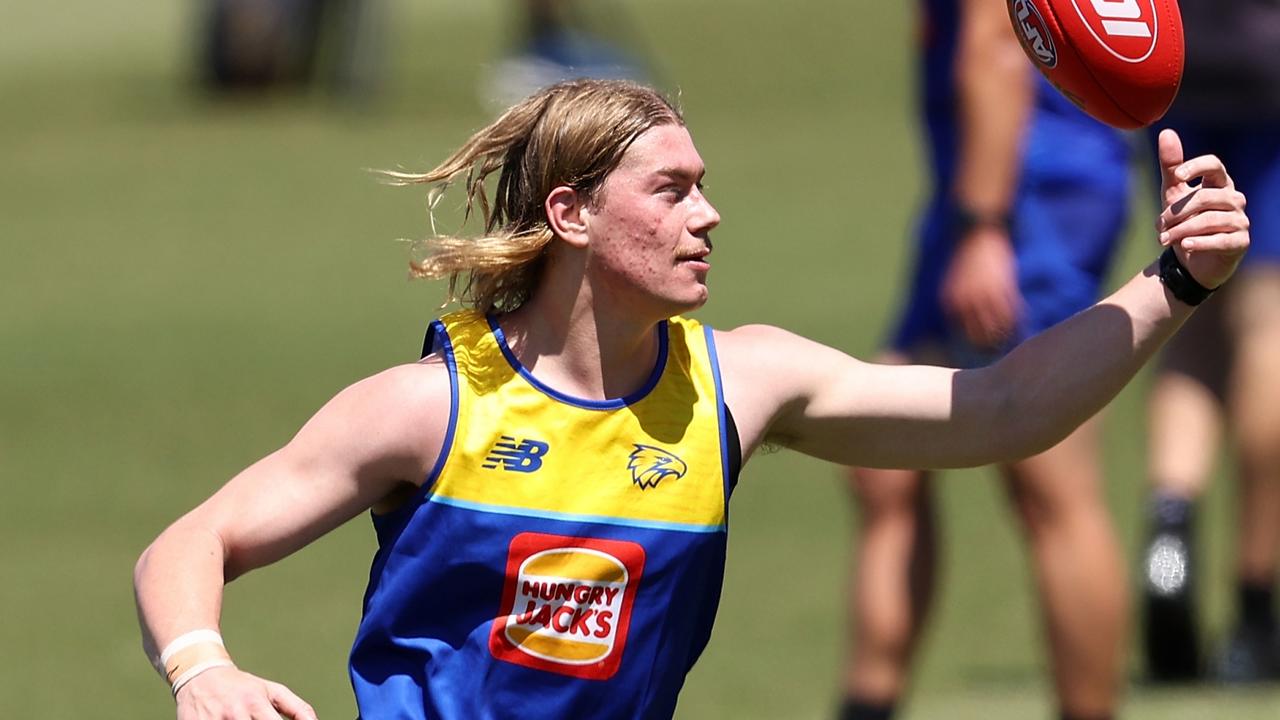St Kilda legend Neil Roberts on what the Saints still mean to him; the Brownlow; missing out on finals and flags; life in Antarctica
On the eve of St Kilda’s 150th birthday celebrations, club legend Neil Roberts reveals what is the real lifeline of the Saints and why he hopes they can finally secure that second premiership cup.
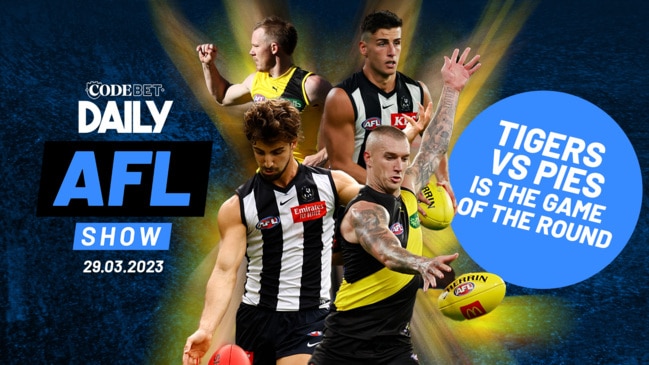
AFL
Don't miss out on the headlines from AFL. Followed categories will be added to My News.
The road that split the middle of Neil Roberts’ childhood street — Elizabeth St in Brighton East — was the “demarcation point” in footy terms between success and starvation.
As a Melbourne supporter, Roberts grew up on the wrong side of the road in the early 1950s.
His side of Elizabeth St residentially tied the promising young footballer from Melbourne High School Old Boys to lowly St Kilda in the VFL, a club yet to win a premiership and almost always anchored near the bottom.
If he had lived across the road, he would have played for Melbourne, who were about to embark on a streak of premierships.
“The line of demarcation went down the middle of our street,” Roberts explained this week.
“I was on the St Kilda side and I said to the old man ‘Can I go and sleep at the woman’s house across the road for six weeks so I can qualify residentially (for Melbourne)’?
“He wouldn’t let me do it.”
Roberts, who will turn 90 in June after a lifetime of extraordinary achievements in sport, education and leadership, went on to play 169 games across 11 seasons with St Kilda.
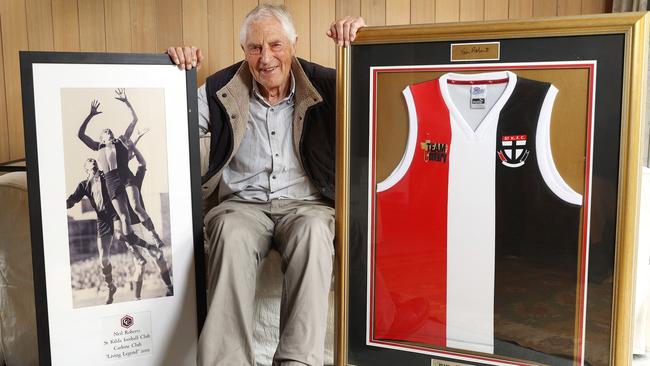
Only one of those came in a final — a semi loss to Footscray in 1961.
There would be no premiership medals for this dashing and debonair defender, but he did win the 1958 Brownlow Medal.
In the span of Roberts’ VFL career, from 1952 to 1962, the Demons reeled off five premierships from seven consecutive grand finals.
Was he ever envious?
“I never worried about that from the moment I walked into St Kilda,” Roberts said.
Even now, more than 70 years after his debut match in 1952, he doesn’t wonder what might have been.
Instead, he remains eternally grateful for the platform VFL football — and St Kilda — provided for him, and the many, many friendships it created.
As St Kilda prepares to celebrate its 150th anniversary on Saturday night against Essendon at the MCG, Roberts embodies the spirit of the Saints as much as anyone.
He has been connected to the club — and its fans — for more than 70 years and has ridden the highs and lows of a club that has rarely been out of the headlines.
“It has been an enormous part of my life,” Roberts said of the Saints.
He knows St Kilda has had its imperfections across a century and a half, with countless champions, characters and cult heroes, but with only one team — in 1966, four years after Roberts retired at 29 – capable of winning the premiership, despite a few near misses.
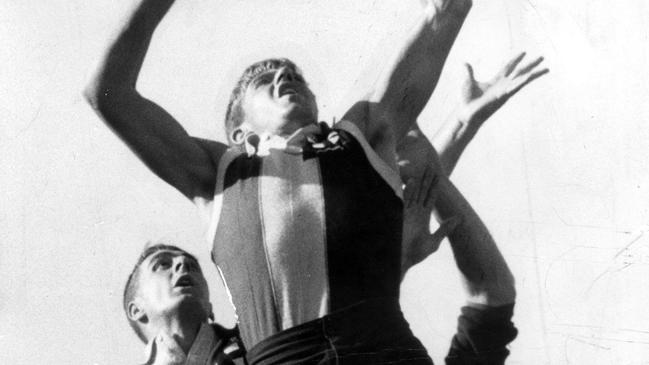
“We’ve had some marvellous players and brought about some marvellous wins over the years,” he said. “We have had such a rich history, yet we’ve only won one flag.”
“But we’ve never really been able to put a complete set of players out on the ground.
“There has always been conflict and we’ve never had a strong enough committee to hold onto some of our best players.”
Roberts says the lifeblood of the Saints is the rusted-on fans who have stayed through thick and mostly thin.
“They have been amazing supporters … they have been so loyal and committed,” he said. “I’m so grateful for what they’ve done for me over the years.’’
HOW AN INDIGENOUS TRAILBLAZER SAVED HIS CAREER
Roberts made his VFL debut for St Kilda in 1952.
His dad saw only a half of one game in his career after “decking” a Saints fan who abused his son’s inaccurate kicking one day at the Junction Oval. His mum broke her ankle at a game at Victoria Park after “some idiot” kicked the fruit case she had been standing on.
If it hadn’t been for St Kilda’s first Indigenous footballer Jimmy Wandin, Neil Roberts says he wouldn’t have won a Brownlow Medal or had a long VFL career.
Roberts had just finished his teacher’s college course and his first assignment in 1953 was to take over the Dixons Creek school, in the Yarra Valley, about 50km from Melbourne.
“It was an eight-kid school and we had to have nine to keep it alive, so we counted one kid twice,” Roberts said with a chuckle.
He walked “seven miles” from Yarra Glen towards Dixons Creek, but got hopelessly lost and had to seek help from a local dairy farmer.
He told the farmer: “I’m lost, I’m the new schoolteacher, do you know where the Dixons Creek school is?”
Roberts thanked him and told him his name when the farmer provided directions.
Then the farmer said: “While we are swapping names, my name is Colin Watson.”

A past Brownlow winner had inadvertently met a future one. Watson won St Kilda’s first Brownlow Medal in 1925. Roberts would win his medal five years after this meeting.
Roberts had to find a way to get from Dixons Creek to the Junction Oval (St Kilda’s then home ground) for Thursdays and Saturdays — to keep his VFL dream alive.
His teammate Jimmy Wandin lived in Healesville and offered to drive him in his 1948 Ford Twin Spinner.
“If Jimmy hadn’t brought me to training (in 1953), I would never have made it,” Roberts said. “He would bring me down on a Thursday night and drive me back, and he would bring me back down again on a Saturday.”
Wandin played 17 games as a centre half-forward for the Saints in 1952-53.
Roberts still gets emotional about their last car ride to Melbourne in 1953.
“On the last journey Jimmy said to me: ‘This is the last time I will be bringing you down (to Melbourne).’
“He was crying. I said to him: ‘Jimmy, you are upset, what’s the matter?’ He said to me: “I can’t stand the vilification any more, from people in the crowd and the opposition’.”
Wandin would become one of the leaders of the Wurundjeri people, but Roberts wonders what else he could have achieved on the footy field if he hadn’t encountered racism.
BROWNLOW AND A COACH CALLED KILLA
Fun was every bit as important as the quest for finals at St Kilda in the early to mid 1950s.
A tough but not especially talented footballer and noted practical joker, Lindsay Fox (who would go on to create a trucking dynasty) offered to drive his teammates home one night.
As Roberts recalled with a laugh: “(Fox) drove them (the Saints players) onto the St Kilda pier … but it was a tip truck and he tipped them all into the drink.”
But the arrival of Alan Killigrew as coach brought a more competitive edge, as Roberts transformed from an inaccurate forward into one of the best centre half backs in the game.

Roberts won the club’s best and fairest in his fourth season (1955); in his seventh season of 1958 he won the Brownlow Medal, as well as the club champion honours.
“He (Killigrew) taught us nothing about football, but he taught us a hell of a lot about self belief,” Roberts said.
“He kickstarted St Kilda.”
In Killigrew’s last season, Roberts won the 1958 Brownlow Medal by two votes, a moment that changed his life.
He has always been one of the most humble champions, but is proud he joined a select group of footballers in winning one, and has fiercely challenged the VFL-AFL to keep the “fairest and best” element.
He credits his fellow St Kilda defenders including Eric Guy, Bud Annard, Jim Guyatt, Brian Walsh and Verdun Howell, with helping him achieve so much.
On the night he won it, Roberts was at his parents’ house when an ABC journalist knocked on the door saying she thought he was going to win it.
He was helping to wash the dishes when it was announced on radio he had won it.
He had promised leading Herald journalist, Alf Brown, he would go to Channel 7 to be interviewed.
“I went to the wrong station by mistake,” Roberts confessed 65 years on.
He ended up at Channel 9 and appeared on Graham Kennedy’s In Melbourne Tonight, where he was quizzed off-air by model/presenter ‘Panda’ (Lisner) who he played for and what his name was.
Roberts said deadpanned: “I’m Ron Barassi from Melbourne.”
Panda replied: “Oh, Ron, I have always wanted to meet you!”
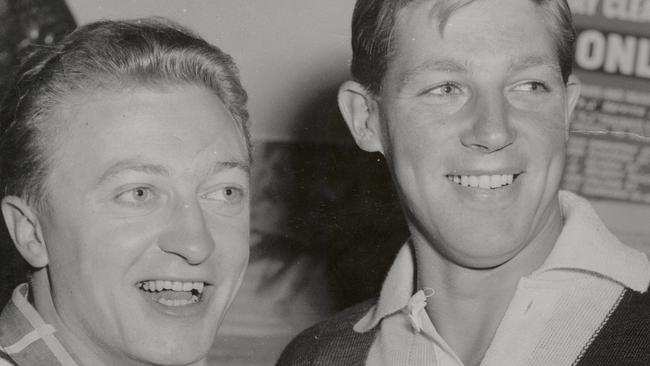
RETIREMENT AND THE MEDIA
Roberts played his one final in 1961 in Allan Jeans’ first season as coach.
He says he and Jeans “weren’t the best of friends”.
So when Roberts was having some injury issues towards the end of the 1962 season, he felt he wasn’t getting support, so he retired at 29.
He started covering football for the Sporting Globe (and later the Sunday Press/Sunday Herald Sun) and worked alongside Jack Dyer and Lou Richards on World Of Sport.
“They were all freaks,” Roberts said of the World Of Sport crew, a television show that became a Victorian institution on Sundays. “We had so much fun.
“We used to have mice races down in the cellar at Channel 7 (after the show). Bill Collins was the bookie, the commentator and the conductor of the meetings.
“It was all illicit as it was an unlicensed premises. Lou and Ron (Casey) had the mice. They got the breeze (word) the coppers were going to raid the place, but they didn’t tell anyone else. Lou said: “Do you want to buy a mouse?“ I did, and in the first race it stood up like a meerkat, I said to Lou” You sold me a pup’. He said: ‘Why don’t you try him over the jumps”.
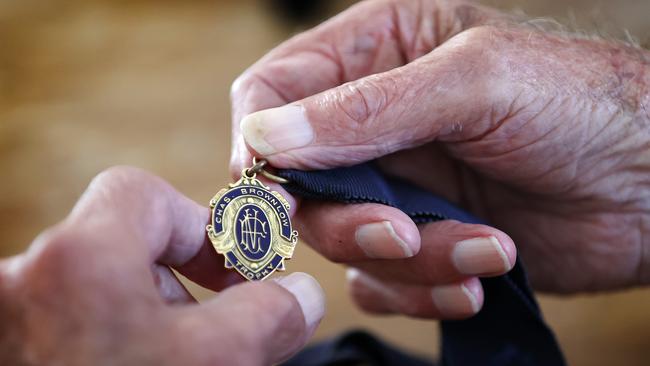
SPIRIT OF ‘66
Roberts couldn’t have been more pleased for the long-suffering fans when the Saints broke their premiership drought, knocking off Collingwood by a point in 1966.
“We probably played social footy at the Saints until (Darrel) Baldock came along. He changed the mentality of the place,” he said of the club’s 1966 premiership skipper.
“The Tasmanian contingent of Baldock, (Ian) Stewart, (Verdun) Howell and (John) Bonney came along and made a big difference.
Roberts covered St Kilda’s premiership from the press box, but will never forget the celebrations.
“It was marvellous,” he said. “I remember going to the (local) swimming pool and we were doing one and a half (dives) into the pool … in our suits.”
THE BIG FREEZE
Roberts was always keen to improve his leadership skills, so when he was coaxed into applying to become the officer in charge of Mawson Base in Antarctica, he went for it and narrowly missed out.
He reapplied the following year and was selected.
It led to “the most remarkable experience” of his life, spending 16 months in charge of 29 men “wintered in” and 53 in the other times.
“It was the most challenging and rewarding period of my (professional) life,” he said.
“I was always interested in leadership, so I thought I would give it a go.”
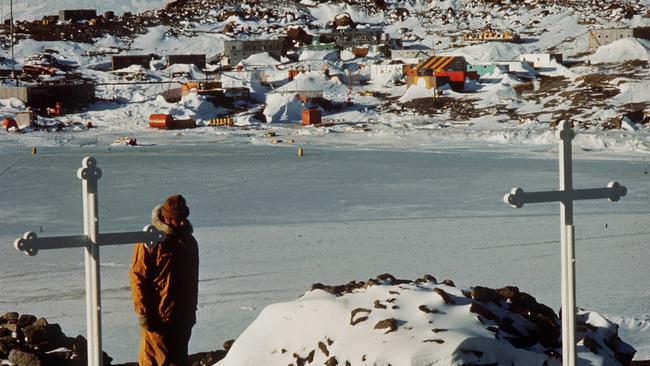
He arrived at Mawson with some thinking he had been “a television appointment”, but he embraced the role, meeting some extraordinary people in the process.
He took up the role in December 1971, a few months after the Saints lost to Hawthorn in the grand final.
“Someone painted the radio shack roof brown and gold (in Hawthorn colours),” he said. “We flew the chopper in, so they knew we could see it.”
The hardest thing he had to deal with was the death of one of the radio officers, who had to be buried there, to the accompanying howling of the huskies.
“It really moved me,” he said of the experience.
“It taught me the dignity of hard work and most of all it taught me interdependence … the whole station depends on you. It was a life and death thing, and yet it was magnificent.”
Roberts has been back to Antarctica on a number of occasions since, and was accompanied his son Michael — who also played with St Kilda and represented Victoria — who also has a passion for the place after two visits.
Having survived a horror accident in a car driven by Ron Barassi in 1976, Roberts turned to art in his recovery, and some of his best works have been based on his memories and photos from his time at Mawson.
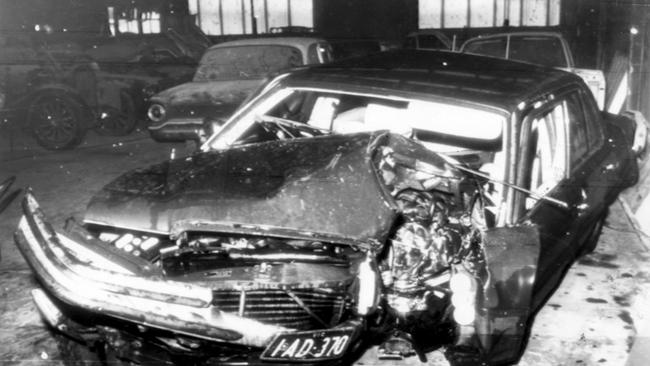
“We were lucky,” Roberts said of the accident.
It cost him the Carlton coaching job he had been offered for the 1977 season, but it has left him with some remarkable artwork that features prominently in his home to this day.
SAINTS’ 150TH CELEBRATIONS
Roberts, a noted raconteur and almost a father-figure of the Saints, will be at the MCG on Saturday night as St Kilda turns on its 150th birthday bash — and he can’t wait.
It will bring back memories of the champions who came before him and after him, and he still dearly loves the club.
He labels Tony Lockett as the greatest player he has seen wear a St Kilda jumper.
“He was incredible,” Roberts said of Lockett, who kicked almost 900 goals for the Saints before leaving for Sydney. “No one could stop him.”
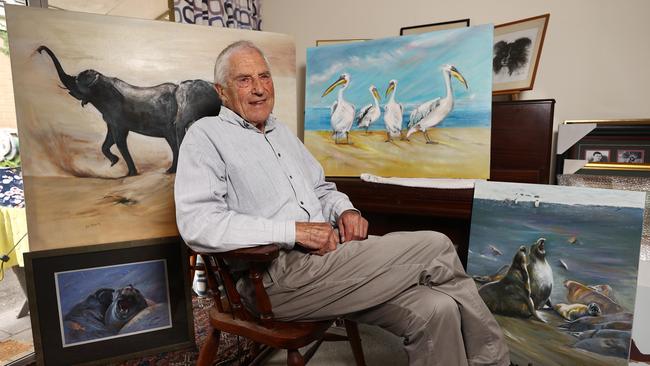
“But ‘the dancer’ (Robert Harvey) and (Darrel) Baldock were great players, too, and Ian Stewart.”
He laments the fact that St Kilda has come so close to a second premiership without winning it, but dearly hopes the long-suffering fans can finally get the chance to celebrate another flag sooner rather than later.
He’s hoping the Ross Lyon 2.0 era might change that, and is buoyed to see Harvey and Lenny Hayes back at the club.
“We’ve been to the well (a few times), but couldn’t quite draw the bucket up,’’ he said. “Let’s hope that can change soon.”
Lenny or St Nick? Who’s the greatest Saint?
As St Kilda prepares to celebrate its 150th birthday, Glenn McFarlane looks at some of the most loved Saints who helped to steer the club through the good and the bad — and some of the well-known fans who have been there throughout the wild ride.
DARREL BALDOCK (1962-68, 119 games, 237 goals. Coach of the club in 62 games, 1987-89)
Enshrined as the Saints’ first – and so far only – premiership skipper, Baldock was a football genius who flashed like a comet across seven AFL seasons before returning to his native Tasmania. He later returned to coach the lowly Saints in the late 1980s.
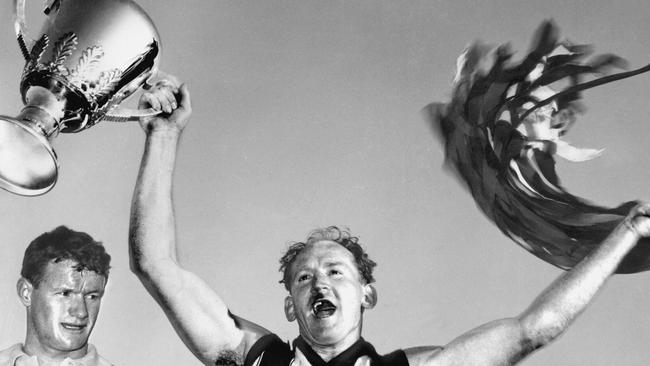
IAN STEWART (1963-70, 127 games, 25 goals)
One of the most gifted footballers in the game’s history, Stewart won back-to-back Brownlow Medals in 1965 and ‘66 in one of the Saints’ best eras. It still tugs at the fans’ heart strings that a dispute saw him leave for Richmond in 1971 where he won a third Brownlow. Could he have made the difference – if he had stayed at St Kilda – in the 1971 grand final?
TONY LOCKETT (1983-94, 183 games, 898 goals)
A goal-kicking colossus who gave the Saints fans something to cheer for through the miserable 1980s and the more competitive early ‘90s before his shock move to Sydney. He won the Brownlow in 1987, making headlines for mostly good and sometimes bad reasons on and off the field. Kicked almost 900 of his record 1360 VFL-AFL goals in a St Kilda jumper. Could he have made a difference – if he had stayed with the Saints – in the 1997 grand final?

ROBERT HARVEY (1988-2008, 383 games, 215 goals)
No Saint has played as many games as the running machine who wore the No. 35 guernsey. A dual Brownlow Medal winner, four-time best-and-fairest winner and eight-time All-Australian, a flag was one of the few things that eluded him. Now back at the Saints to impart his wisdom to the next generation.
NICK RIEWOLDT (2001-17, 336 games, 718 goals)
Not only a superstar key forward but also a great leader who helped take the club to back-to-back grand finals in 2009 and 2010. A toe-poke and a bad bounce of the ball denied them of a flag or two. Won a club-record six best and fairests in a relatively successful era.

LENNY HAYES (1999-2014, 297 games, 95 goals)
St Kilda produced T-shirts for Lenny Hayes’ last game – emblazoned with ‘I love Lenny’ – which perfectly represented what the inspirational midfielder meant to his teammates and Saints’ fans. A three-time best and fairest and All-Australian, Hayes also won the Norm Smith Medal in the 2010 grand final draw, Like Harvey, he is back at Moorabbin.
NATHAN BURKE (1987-2003, 323 games, 124 goals)
Phil Narkle first fashioned helmets at St Kilda, but it was tough and tenacious midfielder Nathan Burke who took it to a new level. A team-first player, he always put the collective ahead of his own needs, Burke won three B&Fs and made four All-Australian teams.
TREVOR BARKER (1975-89, 230 games, 134 goals)
One of the most revered names in St Kilda’s history, the blond-haired Barker was a shining light during a decade and a half of gloom. He possessed a spectacular leap, dragging down countless mark of the week grabs. Stayed loyal to the Saints when he could so easily have left for more money or success. His death from cancer – at 39 – meant he sadly never got to coach the club which always seemed his destiny.
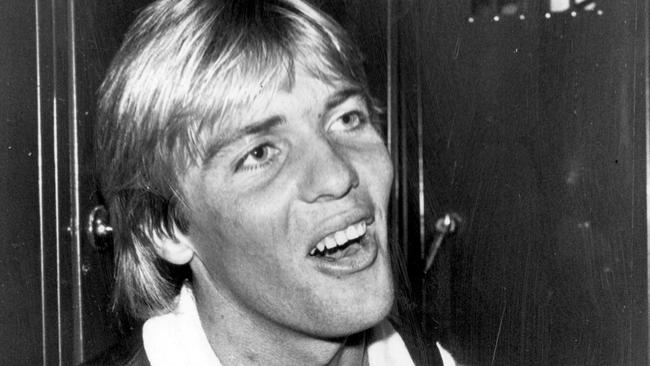
NEIL ROBERTS (1952-62, 169 games, 40 goals)
One of the Saints’ idols of the 1950s and early 60s, Roberts transformed from a sometimes inaccurate forward into one of the best defenders in the game. He won the 1958 Brownlow Medal as well as two club best and fairests. Played one final in 169 games, but was one of the Saints’ favourite sons, with his own son, Michael, also representing the club as well.
ALLAN JEANS (1955-59, 77 games, 26 goals. Coach of the club in 315 games, 1961-76)
His playing career was a modest one, but he coached the club across 16 seasons. He led St Kilda to its only flag in 1966 – beating Collingwood by a point – as well as into two more grand finals in 1965 and 1971. He later coached Hawthorn to three more flags.
ROSS SMITH (1961-72, ‘75, 234 games, 230 goals. Coached the club in 22 games, 1977)
Hard work and dedication saw the humble Ross Smith become one of the best rovers in the game. He was a member of the Saints’ 1966 flag, and won the Brownlow Medal in 1967. Made a comeback with the Saints in 1975 before coaching the club for a season in 1977.
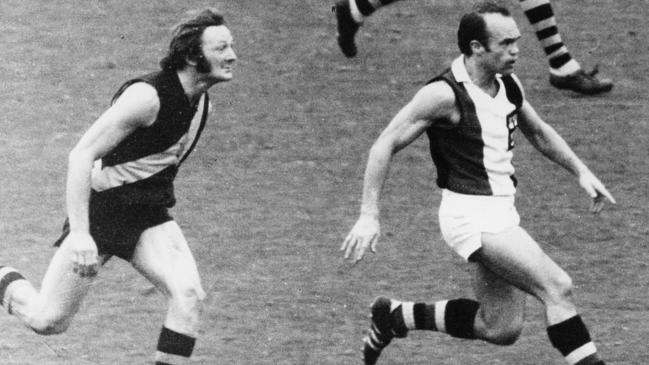
CARL DITTERICH (1963-72, ‘76-78, 203 games, 156 goals)
One of the most feared ruckmen of his era, Ditterich was a ruthlessly tough competitor who made those playing alongside him walk taller. He was the hard-luck story of the 1966 premiership success, having been suspended in the penultimate game of the home and away season. The media-shy big man had two stints with St Kilda as well as Melbourne.
DANNY FRAWLEY (1984-95, 240 games, 13 goals)
Ever-reliable defender who was a heart-and-soul leader, captaining the club in 187 games. Won the 1988 best and fairest, the same year he was named in the All-Australian team. His deep affinity with the club and its fans was such that his family chose Moorabbin as the place for his funeral after his shock death in 2019.

BILL MOHR (1929-41, 195 games, 735 goals)
No lesser judge than Gordon Coventry rated St Kilda sharpshooter Bill Mohr as one of the best full-forwards he had ever seen. In a team that often struggled to kick a winning score, Mohr booted more than 700 goals in less than 200 games, and became the first Saint to reach the century in a season with 101 in 1936.
BARRY BREEN (1965-82, 300 games, 308 goals).
It almost seems a touch unfair given he played 300 games that Barry Breen is best remembered for one kick and one behind in one game. But his point in the dying moments of the 1966 grand final was the stuff of legends, winning the Saints their only flag. But Breen’s contribution to the club lasted almost 20 years after the most important kick of his career.
NICKY WINMAR (1987-1998, 230 games, 283 goals)
Winmar was one of the most spectacular players to represent St Kilda across 12 seasons. But among the many highlights was one of the most significant moments not only in the club’s history, but the game’s. He made a stand against racism at Victoria Park in 1993, which became the catalyst for change in the AFL in a fight that still exists three decades on.
KEVIN ‘COWBOY’ NEALE (1965-77, 256 goals, 301 goals)
The man known as ‘Cowboy’ due to his unusual gait was a tough and uncompromising footballer, whose passion for the club and relentless attack on the contest endeared himself to Saints fans. He was a member of the 1966 premiership side and he left Peter Hudson concussed in a key, controversial moment of the 1971 grand final.
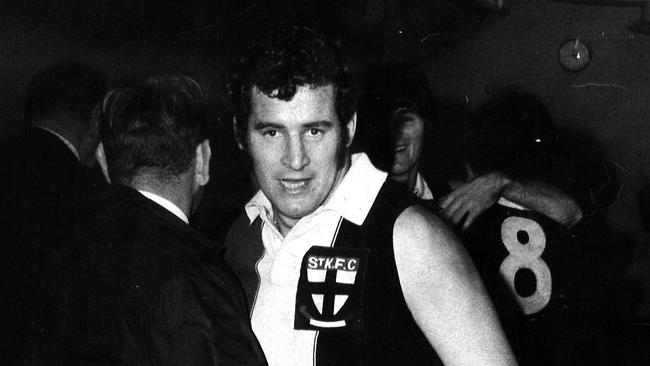
STEWART LOEWE (1986-2002, 321 games, 594 goals)
They called him ‘Buckets’ for his enormous hands which became a weapon for the Saint considered one of the AFL’s best marks of his age. Formed a great relationship with Tony Lockett in attack and went on to make two All-Australian teams and improved his awkward kicking style which saw him end up kicking almost 600 goals.
VERDUN HOWELL (1958-1968, 159 games, 59 goals)
Another of the Saints’ famed 1966 premiership side, Howell became a champion defender for the club who was retrospectively awarded the 1959 Brownlow Medal, having originally lost the award on a countback to Bob Skilton. Always a much loved figure at the club.
FRASER GEHRIG (2001-08, 145 games, 390 goals)
The ‘G Train’ was stopping all stations in the early 2000s. Gehrig gave Saints fans a wild, rollicking ride which saw him win two Coleman Medals as well as kicking 103 goals in 2004. The former Eagles was adopted by his new club as he became a key spearhead for St Kilda who was unconventional off the field but almost unstoppable at his best on it.
STEPHEN MILNE (2001-13, 275 games, 574 goals)
Opposition fans loved to hate him, but that only made St Kilda barrackers cheer for him more. Milne was a thorn in opposition sides for more than a decade, making two All-Australian teams and winning the club’s goal kicking on four occasions. He was almost the hero of the 2010 grand final in the dying moments … until the ball bounced the wrong way for him – and for St Kilda.
—--------------------------------------------------------------------------------
FAMOUS SAINTS FANS OVER THE YEARS
SHANE WARNE
Before he wanted to be a Test cricketer, Warney wanted to be a St Kilda footballer. He almost made it too, playing under 19s and reserves with the club. But his destiny was cricket and he would become one of the greatest players of all-time. He remained connected to the Saints throughout his life. His private funeral was held at the St Kilda Football Club last year, with two Saints scarfs adorning his coffin.
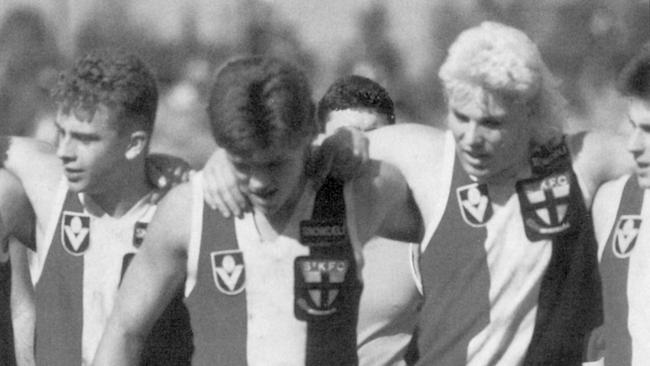
LINDSAY FOX
If it wasn’t for billionaire businessman and former Saints player Lindsay Fox, there might not have been a St Kilda Football Club in 2023. He played 20 games from 1959-61, but it was efforts off the field that helped save the Saints. He returned to the club as president in 1979 and helped the club through many financial storms including one that threatened to close up the doors.
ERIC BANA
St Kilda young gun Mattaes Phillipou confessed after last week’s victory that he didn’t know who Eric Bana was. You can bet your bottom dollar Bana knows who Mattaes is! The Hollywood actor who famously starred as Chopper among many other roles is a passionate Saints fan who is a regular visitor in the club’s change rooms.
MOLLY MELDRUM
Molly is technically still waiting to hear the final siren sound on his first Saints flag. He was there that famous day in 1966 as part of the St Kilda cheer-squad but fainted moments after Barry Breen kicked the matchwinning point in the dying minutes.
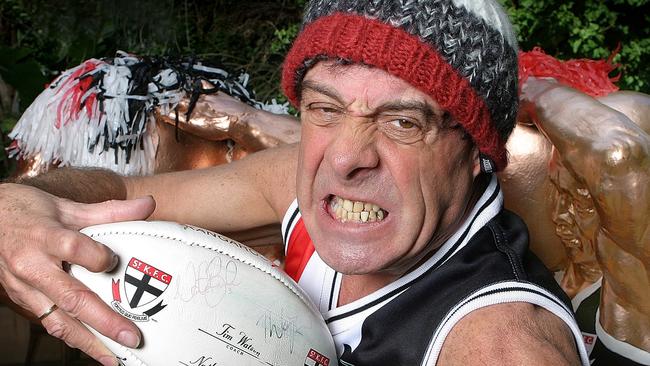
MICHAEL GUDINSKI
The late music executive and promoter was not only a passionate Saints fan, he served on the board as vice-president for a number of years. St Kilda players loved him (and not just because he often provided them with the best concert tickets). The club wore black armbands when he died in 2021.
ED SHEERAN
Michael Gudinski and Shane Warne “recruited” Ed Sheeran to become a St Kilda supporter, among the many global celebrities who were coaxed to follow the red, white and black. Sheeran has visited Moorabbin on a few occasions and recently sent the club a special 150th birthday greeting.

GRAHAM KENNEDY
Who were pallbearers at the funeral of Australian television icon Graham Kennedy in 2005? Full marks if you answered then Saints president Rod Butterss, coach Grant Thomas and players Nick Riewoldt, Aaron Hamill, Luke Ball and Fraser Gehrig. Kennedy may have been a reclusive star for much of his career, but he always loved the Saints.
GERRY RYAN
Hugely successful businessman and sports-lover who has served on the Saints’ board and has long been a passionate supporter of the club. Has always been willing to assist St Kilda.
ELLE MACPHERSON
The Saints staged a coup when they convinced one of the world’s best known and successful models in Elle Macpherson to become the club’s No. 1 female member in 1990. Not sure how closely she still follows the Saints to this day.
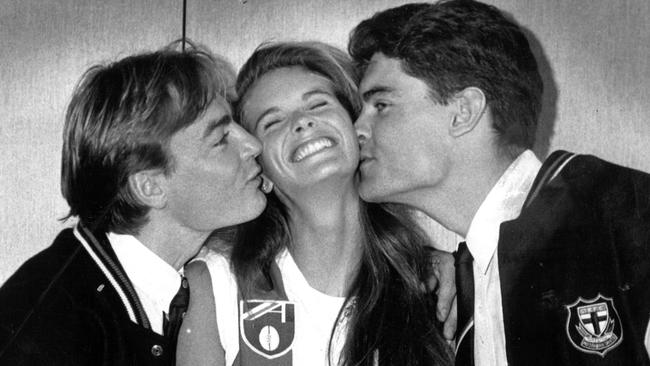
CHER
Another international superstar who was photographed in a St Kilda jumper during a promotional event in 1981 in an effort to boost the club’s membership campaign. She took a shine to Trevor Barker, the Saints’ most marketable and best player at the time.
JANE BUNN
Channel 7’s weather expert Jane Bunn also doubles as a passionate St Kilda supporter, having been brought up around the bayside. She is often seen at Saints’ games.




